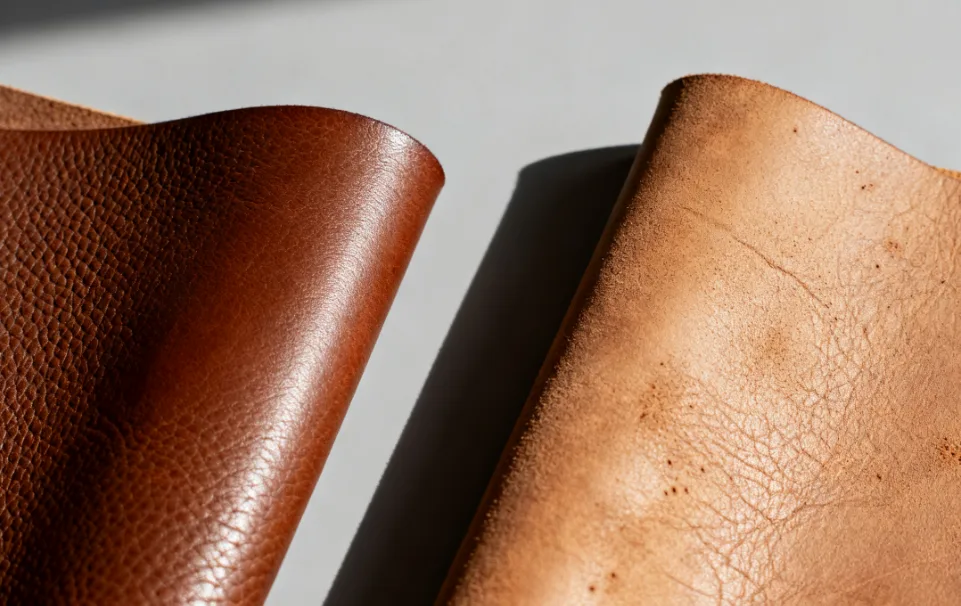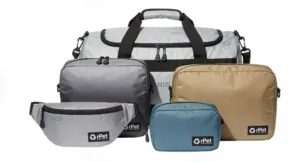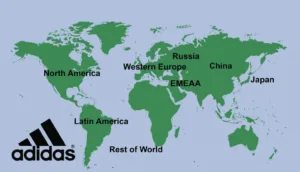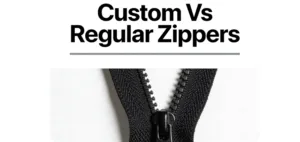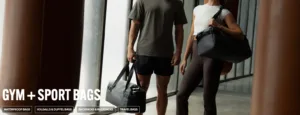Whether you’re shopping at a leather shop or browsing online for premium leather goods, you may notice products made from different types of leather. Many consumers are not familiar with terms like full-grain leather or top-grain and instead look for the label “genuine leather.” However, simply being labeled “genuine leather” doesn’t guarantee quality or durability. If you’re after true leather craftsmanship and long-lasting performance, choosing products made from full-grain leather mens wallet leather or full-grain leather sofa is a much safer bet. Trusted suppliers like Sunteam leather Bag provide high-grade leather that ensures every piece delivers top-notch appearance, feel, and longevity.
Contents
What Is Full-Grain Leather
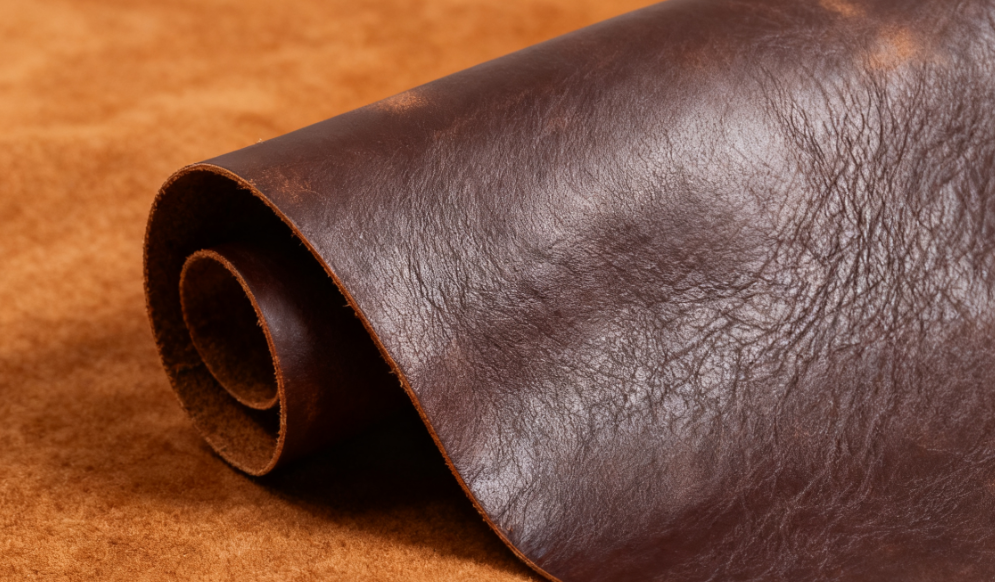
Leather quality plays a crucial role in determining a bag’s durability and aesthetic appeal. Choosing the right type can make the difference between a standard product and a premium piece.
Definition of Full-Grain leather
Full grain leather comes from the top layer of the hide and includes all of the natural grain, while top grain leather has the outermost layer of the hide removed.
Why Full-Grain Leather Is So Popular
What makes Full-Grain leather highly valued is its ability to age beautifully over time. The surface develops a natural patina — a soft sheen that deepens with use, enhancing the bag’s character instead of wearing out. Its dense fiber structure ensures exceptional durability and breathability, making it one of the strongest materials used in high-end bag production. Customers seeking authenticity and long-lasting elegance often prefer Full-Grain leather over Top-Grain alternatives.
When comparing Full grain vs top grain, the difference lies mainly in surface treatment and performance. Top-Grain leather is lightly sanded and coated to create a more uniform finish, while Full-Grain leather remains untouched, offering superior strength and natural beauty. This subtle yet crucial distinction — the difference between full grain and top grain leather — influences both the tactile experience and the long-term appearance of the final product.
Manufacturing Process
The production of Full-Grain leather requires precision and craftsmanship. Most high-end manufacturers use vegetable tanning or chrome tanning processes to achieve the desired balance between softness, color depth, and strength. Vegetable-tanned Full-Grain leather is eco-friendly and develops a rich patina over time, while chrome-tanned versions offer more flexibility and color consistency — both widely used by the best leather bag manufacturers in the USA and Europe.
During manufacturing, each hide is carefully selected, cut, and finished by skilled artisans who understand how grain direction, thickness, and fiber density affect the final quality. This expertise allows Full-Grain leather bag manufacturers to maintain a perfect harmony between aesthetics and durability.
Best For
Full-Grain leather is ideal for luxury brands and handcrafted collections that value authenticity and longevity. It is frequently chosen for:
- Premium handbags and designer collections
- Durable travel bags and duffels
- Heritage-inspired leather goods
- Custom-made projects where natural texture is essential
For brands deciding between leather top grain vs full grain, the key lies in understanding product intent. If the goal is to create an heirloom-quality piece that improves with time, Full-Grain leather remains the top choice among professionals who know the true difference between top grain and full grain leather.
What Is Top-Grain Leather
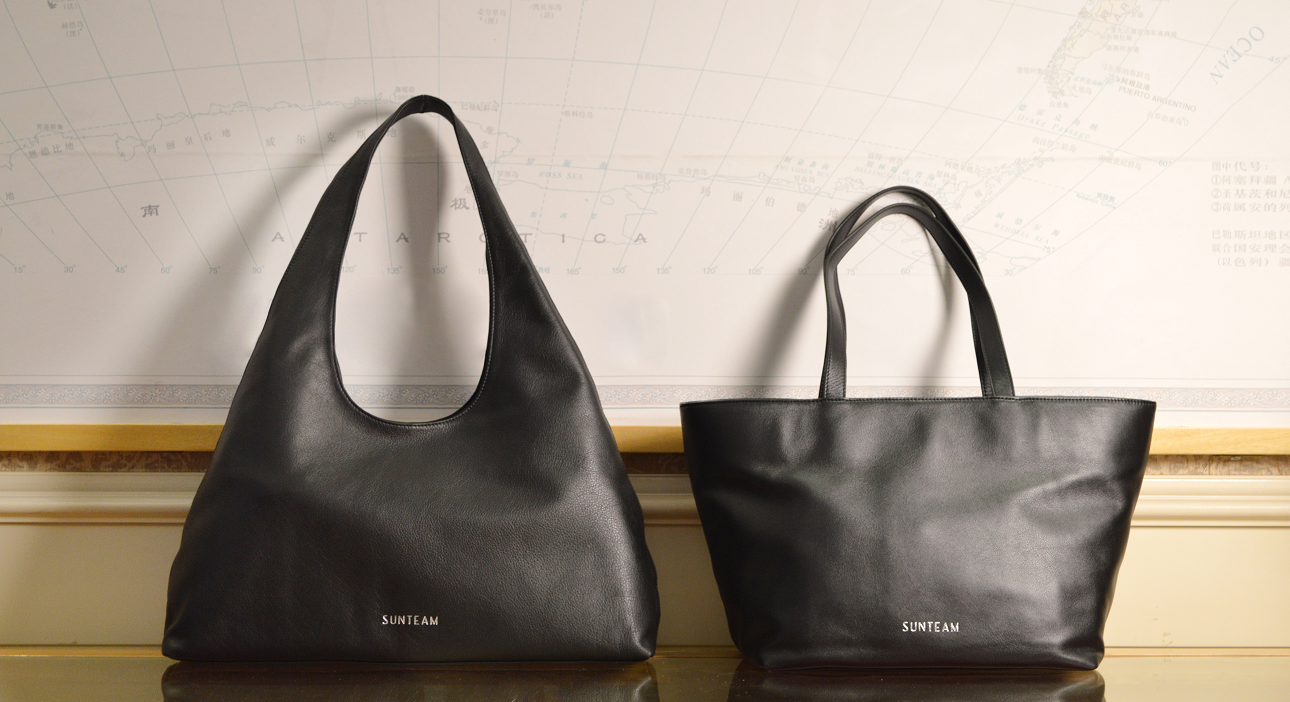
Leather comes in many types, each with its own character and use. Among them, Top-Grain leather is a popular choice for stylish and functional leather goods, offering a smooth and uniform surface that appeals to a wide range of brands.
Definition
Top-Grain leather is the upper layer of the hide that has been lightly sanded and coated to remove imperfections, creating a clean and polished look. Unlike full-grain leather, it sacrifices some natural texture for a more consistent appearance, making it easier to work with for designers and manufacturers alike.
Characteristics
Smooth and even surface, ideal for mens wallet leather, ladies leather wallets, or leather toiletry bags
Soft touch and easier to manipulate during production
Durable, though slightly less resistant than full-grain leather
Maintains a consistent aesthetic, perfect for brands emphasizing uniformity
Manufacturing Process
Creating Top-Grain leather involves careful sanding, dyeing, and applying a protective pigmented finish. Skilled leather stores and leather shops often select hides from trusted suppliers like cowhide leather or specialized tanneries such as Holtz leather and Vinci leather to ensure quality.
Best For
Fashion-forward handbags and accessories
Business and office bag lines
Brands that prioritize a polished, uniform look
Products like top grain leather furniture or custom stone mountain purses
For those comparing top grain vs full grain, the main takeaway is balance: Top-Grain leather offers a sleek, refined look while still delivering strong performance for most applications, making it a versatile option among the various leather types available.
Key Differences: Full-Grain vs. Top-Grain
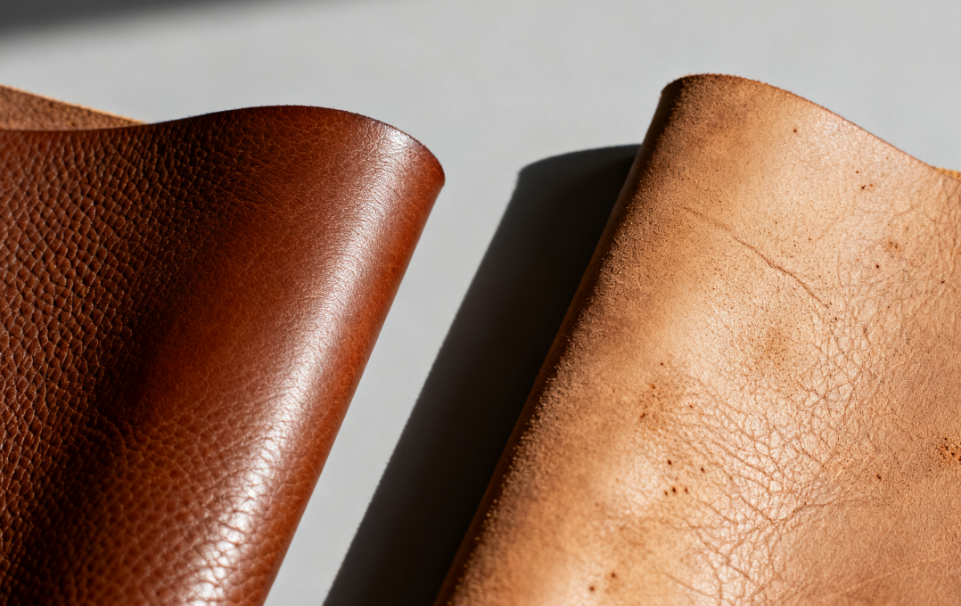
| Feature | Full-Grain Leather | Top-Grain Leather |
|---|---|---|
| Surface | Natural and unaltered | Sanded and corrected |
| Durability | Extremely high | High |
| Appearance | Natural texture, visible pores | Smooth and even |
| Cost | Premium | Moderate |
| Aging | Develops patina over time | Retains a consistent look |
| Maintenance | Requires regular care | Easier to maintain |
Full-Grain vs Top-Grain Leather: Origin Differences
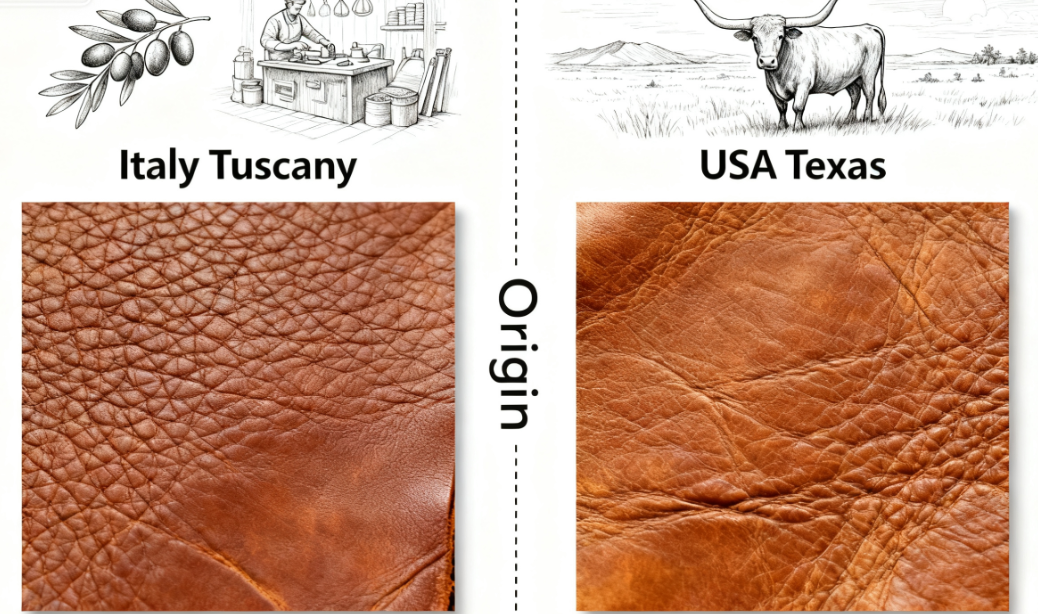
Not all leather is created equal, and where it comes from can significantly impact its look, feel, and performance. Whether you’re sourcing bovine leather for a leather toiletry bag or a full-grain leather sofa, understanding the origin of your material is essential for quality and consistency.
Major Origins
Europe: Countries like Italy, Spain, and France are renowned for their long-standing leather craftsmanship. European hides, often from cow hide boots or high-end ladies leather shoes, feature fine grain, uniform thickness, and rich natural colors. Suppliers like Holtz leather and Coronado leather are known for producing full-grain leather that excels in luxury leather goods.
Americas: The US, Brazil, and Argentina provide thick, durable hides ideal for rugged stone mountain purses, full-grain leather mens wallet leather, and furniture applications. These leathers are prized for their strength and natural patina.
Asia: China, India, and Bangladesh focus on large-scale production. Here, top grain leather is widely manufactured, often sanded and coated to achieve a smooth, uniform finish suitable for top grain leather furniture or mass-produced genuine leather hand purses.
Full-Grain vs Top-Grain by Origin
| Leather Type | Typical Origins | Characteristics | Best For / Applications |
|---|---|---|---|
| Full-Grain Leather | Europe, Americas | Preserves natural texture and marks; develops patina; extremely durable | Luxury handbags, full-grain leather mens wallet leather, full-grain leather sofa, bespoke leather goods |
| Top-Grain Leather | Asia, bulk-producing regions | Polished and uniform surface; easier to dye; consistent color | Mass-produced handbags, top grain leather furniture, genuine leather hand purses, large OEM orders |
Tips for Bag Brands and Bag Manufacturers
When deciding on leather origin, consider your product type, target market, and design expectations. Luxury lines or bespoke collections benefit from full-grain leather couch or maverick leather sourced from Europe or the Americas, while larger-scale leather shops or leather stores may prefer top grain leather for consistent results and cost efficiency. Knowing where does the leather come from can help ensure your products meet both aesthetic and functional expectations, whether it’s a high-end green leather jacket or a stylish leather wallet.
Full-Grain vs Top-Grain Leather: Which Leather Is More Valuable?
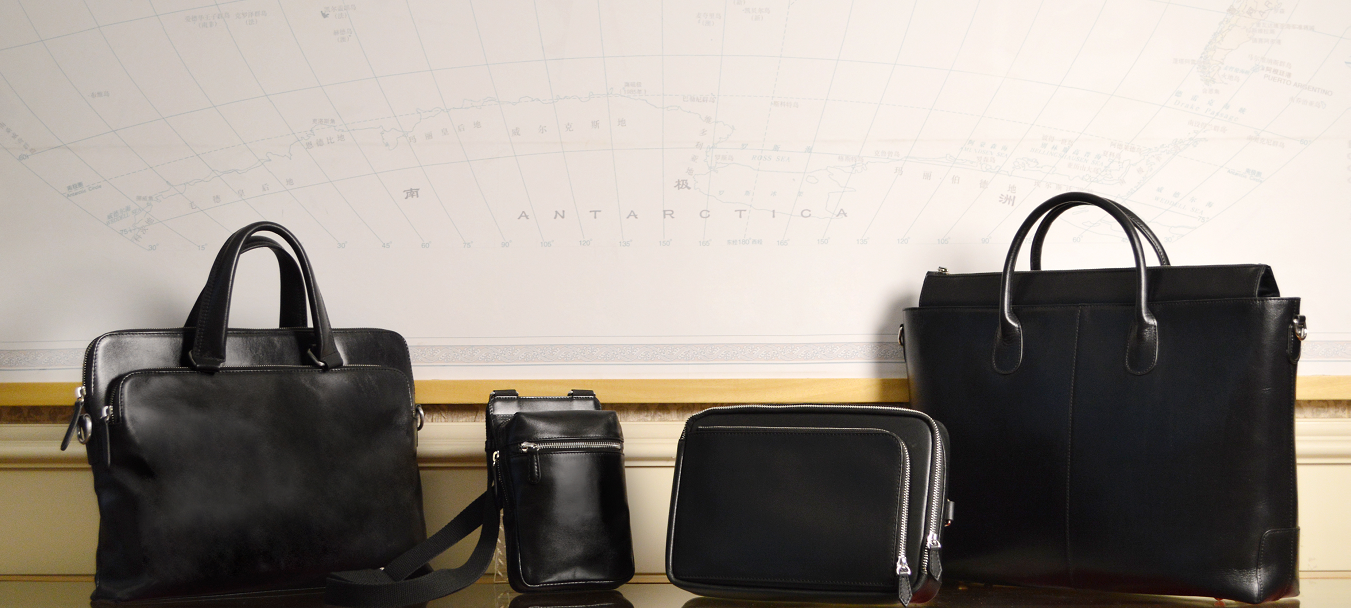
Full-Grain leather is considered the most premium and therefore the most expensive option, while Top-Grain leather offers a more affordable alternative without compromising a high-quality surface finish.
How Much Does Full-Grain Leather Cost?
Full-Grain leather commands the highest price among leather types because it uses the best part of the hide, requires longer processing, and delivers exceptional quality. A full-grain leather bag or furniture piece can range from $200 to $500 or more. This price reflects its durability, unique character, and long-lasting performance, making it a worthwhile investment for brands and customers alike.
How Much Does Top-Grain Leather Cost?
Top-Grain leather is more budget-friendly, usually 20% to 30% less expensive than full-grain leather. The cost depends on the thickness and type of the product, but top-grain leather bags, jackets, or furniture typically range from $100 to $300. For custom leather bag pricing, this makes top-grain leather an attractive choice for mid-range products, balancing quality, appearance, and cost-effectiveness.
For leather bag manufacturers, choosing between full-grain and top-grain leather bags is like picking between a luxury sports car and a reliable sedan. Full-grain leather is for those who crave durability, texture, and premium feel, while top-grain leather hits the sweet spot of quality and cost, perfect for mid-range or bulk orders. Knowing custom leather bag pricing helps brands get the best bang for their buck without skimping on style.
How Leather Impacts Production
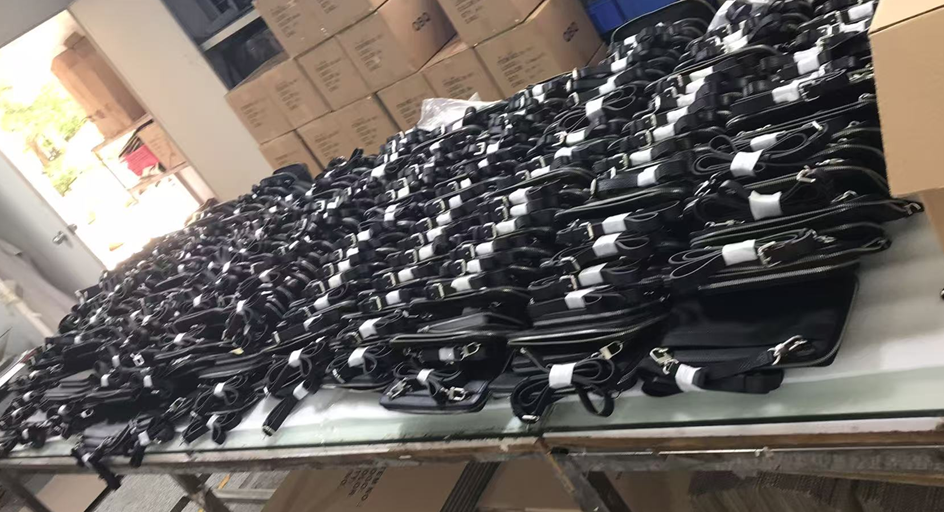
Understanding the type of leather you choose is not just about appearance and durability—it can make or break your production process. For leather bag manufacturers, knowing how full-grain leather and top-grain leather behave during cutting, stitching, and finishing is crucial for efficiency, cost management, and product quality. This insight bridges the gap between material selection and successful production outcomes.
| Leather Type | Production Challenges | Key Points |
|---|---|---|
| Full-Grain Leather | – Cutting and stitching require high precision – Needs experienced craftsmen – Higher risk of material waste | • Superior durability and texture • Labor-intensive • Longer processing time |
| Top-Grain Leather | – Easier to emboss logos – Smooth and uniform surface for dyeing – Better suited for mass production | • Faster processing • Lower waste • Consistent appearance across batches |
How does leather type affect production cost and timing?
Full-Grain Leather takes longer to process and has a higher material loss rate. Cutting and stitching require precision, and experienced craftsmen are needed to minimize waste. As a result, the unit cost of a full-grain leather bag is higher, but the investment reflects superior durability, texture, and long-term value.
Top-Grain Leather is faster to work with and produces less waste. Its smooth surface allows for easier embossing, dyeing, and finishing, making it ideal for mid-range or bulk orders. While slightly less durable than full-grain, it offers a good balance of quality, efficiency, and cost.
Key Cost & Time Insights:
Full-grain leather: higher cost, longer production time, higher skill requirements
Top-grain leather: lower cost, faster production, easier to standardize across batches
Useful for B2B clients when planning pricing, production schedules, and sample development
Why is sample testing crucial?
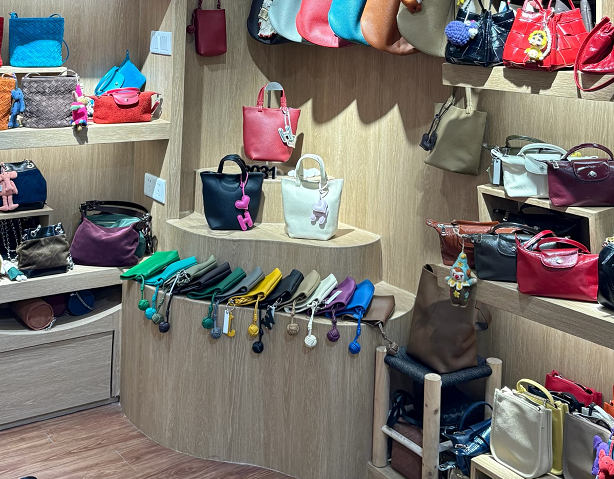
Before scaling production, always verify how the leather performs during cutting, stitching, dyeing, and embossing. Starting with a small batch helps manufacturers evaluate:
Final appearance and uniformity
Durability under real-world use
How well the material holds embossing or logos
Following this process ensures that both full-grain leather bags and top-grain leather bags meet expectations for quality, style, and custom leather bag production efficiency.
Takeaway
Understanding leather behavior during production helps manufacturers reduce risks, optimize workflow, and control costs. By evaluating full-grain vs top-grain leather early in the design and sample phase, brands can strike the perfect balance between quality, cost, and delivery timelines, delivering high-value products that satisfy clients and end users alike.
Conclusion
Choosing the right leather is more than just a design decision—it’s a production decision. Full-grain leather delivers unmatched durability, texture, and luxury, while top-grain leather offers consistency, ease of processing, and cost efficiency. For leather bag manufacturers and brands, understanding these differences ensures smoother production, optimized custom leather bag pricing, and products that truly satisfy clients. Whether you aim for a high-end collection or a scalable mid-range line, knowing your leather inside and out is the key to creating bags that stand the test of time—and make your customers fall in love at first touch.
Frequently Asked Questions (FAQ)
Q1: What is the difference between full-grain leather and top-grain leather?
A: Full-grain leather preserves the hide’s natural texture, marks, and pores, offering maximum durability and developing a unique patina over time. Top-grain leather, by contrast, is sanded and corrected for a smooth, uniform surface, making it easier to dye and emboss. Both are high-quality materials, but full-grain is ideal for luxury items like full-grain leather mens wallet leather or full-grain leather sofa, while top-grain suits mid-range leather goods or bulk production.
Q2: Where does the leather come from?
A: Leather can be sourced from various regions. Premium bovine leather often comes from Europe or the Americas, prized for products such as cow hide boots, full-grain leather couch, or green leather jackets. Asia produces large volumes of top-grain leather, commonly used for top-grain leather furniture and everyday genuine leather hand purses.
Q3: How long do full-grain and top-grain leather products last?
A: Full-grain leather items, including ladies leather wallets or stone mountain purses, can last decades with proper care due to their durability and natural strength. Top-grain leather is still sturdy but slightly less resilient, suitable for products like leather toiletry bags or maverick leather wallets, with a typical lifespan of 5–10 years depending on use.
Q4: Can I customize leather colors or textures?
A: Yes. Many leather bag manufacturers and leather shops offer customization options. Full-grain leather can be dyed or finished to maintain its natural texture, while top-grain leather allows for more consistent leather colors and surface effects. Popular finishes are available from suppliers like Holtz leather, Coronado leather, or Montana Leather Company.
Q5: What should I consider when buying leather for furniture or bags?
A: Consider the types of leather, intended use, and budget. Full-grain leather sofa or full-grain leather mens wallet leather is best for premium, long-lasting products, while top-grain leather furniture and lather wallets offer affordability and uniform appearance. Always check leather grades and supplier reliability to ensure high-quality results.

